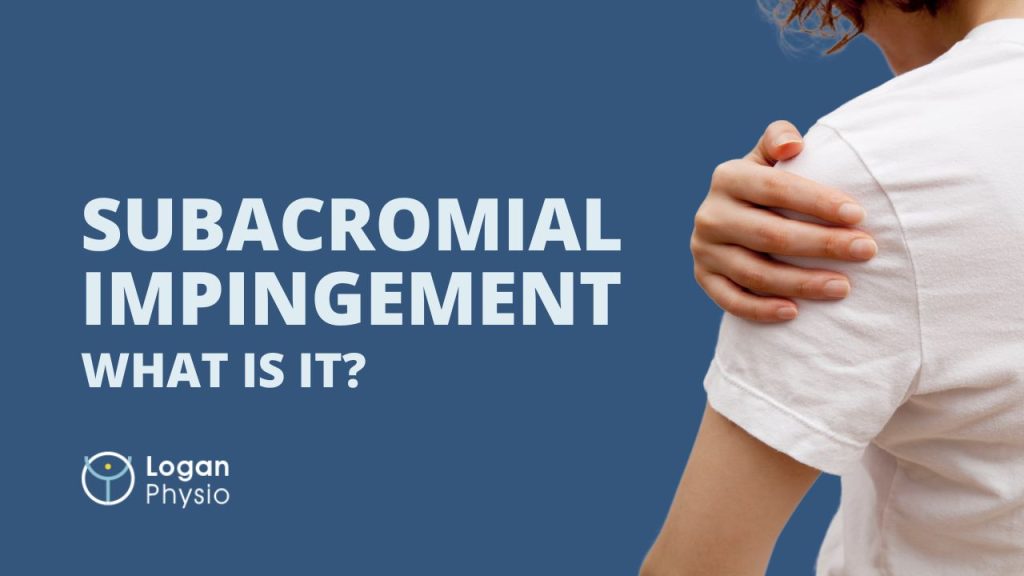What is it?
Subacromial impingement syndrome is a commonly diagnosed disorder of the shoulder. The term ‘impingement’ had been coined in the early 1930s to describe pain experienced in the shoulder. The theory behind impingement is that during overhead activities, the structures that lie in the subacromial space are pinched between the head of the humerus and the acromion. This in turn results in pain and the eventual tearing of the rotator cuff tendons.

For decades, this concept of impingement has been accepted as the cause of rotator cuff pathology. However, new evidence shows that there are other factors that contribute to the development of rotator cuff pathology. These factors can be broken down into two categories, intrinsic and extrinsic factors. Intrinsic factors would include the poor blood supply near the insertion of the tendons, and the inability of the tendons to heal intrinsically. Extrinsic factors would include the amount of stress applied to the tendon by tension or muscle activity.
Following the theory of impingement, if a majority of rotator cuff tendon issues were caused by the rotator cuff’s interaction with the acromion, then this would result in damage to the superior surface of the rotator cuff. However, a narrative review in 2011 identified multiple studies which found that in fact it was the inferior surface of the rotator cuff tendon that had been compromised. They argued that the prevalence of tears was due to intrinsic factors such as age and degeneration and not external irritation from the acromion.
Furthermore, another study investigated what would happen if a rotator cuff tendon was stretched to the point of rupture. They identified that when stretched to point of rupture it was in fact the deeper fibres (under surface) that were found to be more vulnerable to tensile load then the superior surface.
Commonly “shoulder impingement” is treated non-operatively. The most common treatments for “shoulder impingement” include the use of non-steroidal anti-inflammatory drugs, subacromial steroid injection and exercise instructed by your physiotherapist. If non-surgical interventions are ineffective, surgery is usually recommended. The surgery performed is an acromioplasty where the under surface of the acromion is shaved. By doing so, the idea is that the acromion will not interfere with the rotator cuff tendons anymore. However, multiple studies concluded that acromioplasty does not in fact prevent progression of rotator cuff disease. In a nine-year follow-up of, 96 patients who had an acromioplasty, 20% of the patient’s rotator cuff disease had progressed. Moreover, several randomised controlled trails have shown that the outcome of treatment for subacromial impingement syndrome by surgery is no better than conservative management.
In light of the evidence presented, the impingement theory should be reconsidered. Although surgery hasn’t proved to be beneficial to rotator cuff pathology, there are limitations to the studies. The poor outcomes may be due to participants doing too much too quickly or not complying with their exercise program.
But what do you think? Should the impingement theory stand or should it be replaced?



